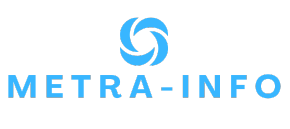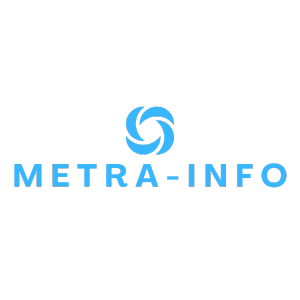Table of Contents
ToggleIn today’s fast-paced digital world, businesses need to adapt or risk being left behind. Enter enterprise app PaaS, the superhero of software development. This Platform as a Service not only saves time but also turns complex coding nightmares into smooth sailing. Imagine building apps faster than your morning coffee can brew—sounds dreamy, right?
Overview of Enterprise App PaaS
Enterprise app PaaS provides a cloud-based platform that streamlines software development for businesses. This model enables developers to build, test, and deploy applications quickly without the burdens of underlying infrastructure management.
PaaS solutions offer integrated tools that enhance collaboration among development teams, allowing larger enterprises to work more efficiently. Developers can utilize pre-built templates and services to simplify processes, reducing coding time significantly. Flexibility is a critical feature, as it allows organizations to adapt their applications in response to changing business needs.
Cost-effectiveness also stands out with enterprise app PaaS. Companies can eliminate the expense of purchasing hardware and software, instead opting for a subscription-based model. This approach allows for better budget management and allocates resources toward innovation instead of maintenance.
Data security remains a priority within enterprise app PaaS environments. Many providers implement robust security measures, including encryption and regular updates to safeguard sensitive information. Compliance with regulatory standards is often built into these platforms, ensuring businesses meet necessary legal requirements.
Scalability is essential in today’s digital landscape. PaaS platforms can scale applications quickly to accommodate growth without requiring extensive redevelopment. This scalability supports a seamless user experience, even during peaks in demand.
Enterprise app PaaS emerges as a vital resource for organizations aiming to enhance efficiency, reduce costs, and maintain flexibility in their software development processes. This model also supports collaborative efforts while ensuring robust security and compliance measures are in place.
Key Features of Enterprise App PaaS

Enterprise app PaaS provides essential features that enhance the software development process. Two standout attributes include scalability and flexibility, along with robust security and compliance measures.
Scalability and Flexibility
Scalability defines the PaaS model, enabling applications to grow in response to evolving demands. Developers can adjust resources swiftly to manage varying workloads without an extensive overhaul of the application. Flexibility complements scalability, allowing customization of applications to align with specific business needs. Organizations can integrate new features easily and modify existing ones, ensuring alignment with market changes or internal strategies. This adaptability supports a rapid response to customer feedback and evolving project requirements. Overall, scalability and flexibility empower businesses to maintain operational efficiency while meeting user expectations.
Security and Compliance
Security stands as a critical feature in enterprise app PaaS. PaaS providers incorporate advanced security protocols to protect sensitive data from unauthorized access. Featuring encryption techniques and regular security updates reinforces data integrity and confidentiality. Compliance with regulatory standards, such as GDPR and HIPAA, remains integral to PaaS offerings. Providers often conduct regular audits to ensure adherence to these regulations, which helps businesses maintain trust with clients. By prioritizing security and compliance, organizations can confidently adopt PaaS solutions while safeguarding their data assets and regulatory obligations.
Leading Enterprise App PaaS Providers
Key players dominate the enterprise app PaaS market, each offering distinct advantages that cater to diverse business needs.
Comparison of Features
Google App Engine stands out with exceptional integration capabilities, supporting various programming languages. Microsoft Azure, on the other hand, excels in hybrid cloud solutions, allowing businesses to blend on-premises and cloud services. AWS Elastic Beanstalk offers automatic scaling features, ensuring applications can handle varying loads effectively. Red Hat OpenShift emphasizes container orchestration, making it ideal for microservices architectures. Each provider integrates tools that enhance collaboration, streamline deployment, and maintain compliance with industry standards, enabling companies to focus on innovation rather than infrastructure.
Pricing Models
Pricing models vary significantly among enterprise app PaaS providers. Google App Engine employs a pay-as-you-go model, allowing companies to only pay for the resources they use, aligning costs with consumption. Azure features a subscription-based approach, offering different pricing tiers based on services selected. AWS Elastic Beanstalk charges based on the underlying resources utilized, giving businesses control over their expenditures. Red Hat OpenShift operates on a per-user model, making it suitable for organizations requiring multiple developers. These flexible pricing options empower businesses to select plans that best match operational needs and budget considerations.
Benefits of Using Enterprise App PaaS
Enterprise app PaaS offers numerous advantages that significantly enhance the software development process. Speed and efficiency stand out as primary benefits, allowing development teams to create and deploy applications rapidly. Integrated tools foster collaboration, streamlining workflows among developers, designers, and stakeholders.
Flexibility forms another cornerstone of PaaS solutions. Organizations can customize applications based on specific needs, ensuring that the end product aligns with business objectives. Rapid iteration in response to user feedback improves overall satisfaction and engagement.
Cost-effectiveness frequently attracts companies to PaaS platforms. Organizations eliminate the need for extensive hardware investments and ongoing maintenance expenses with a subscription-based pricing model. These approaches yield predictable costs, making budget management easier.
Data security remains a paramount concern for businesses. Many PaaS providers implement stringent security measures and undergo regular compliance audits, ensuring adherence to standards like GDPR and HIPAA. Protecting sensitive data builds customer trust and mitigates potential legal risks.
Scalability enhances the appeal of PaaS solutions. Applications adjust seamlessly to accommodate fluctuating demand, eliminating the need for extensive redevelopment. This adaptability ensures that organizations can respond effectively to changing market conditions.
Overall, utilizing enterprise app PaaS enables organizations to innovate quickly while maintaining control over costs and security. Businesses gain a strategic advantage in today’s fast-paced digital landscape through enhanced development capabilities.
Challenges and Considerations
Adopting enterprise app PaaS presents various challenges and considerations for organizations. First, the integration of existing systems with new PaaS solutions can pose significant difficulties, as compatibility issues may arise during implementation. Businesses often face these integration hurdles, which can lead to project delays.
Security concerns remain paramount as well. While many providers implement robust security measures, the shared nature of cloud environments can heighten vulnerabilities. Data breaches can cause significant damage, prompting organizations to evaluate their PaaS provider’s security protocols before commitment.
Dependency on service providers represents another challenge. Companies may find themselves reliant on vendor-specific technologies that complicate future migrations. Lack of control over software updates and infrastructure management can lead to unexpected disruptions.
Cost implications also warrant consideration. Subscription-based pricing models may initially appear attractively economical but can accumulate over time without careful tracking of resource usage. Awareness of ongoing fees ensures better budget management and financial planning.
Regulatory compliance is critical, particularly for industries governed by strict guidelines. Organizations must ensure that their PaaS provider adheres to necessary standards like GDPR or HIPAA. Conducting thorough audits of provider compliance history can mitigate potential legal risks.
Vendor lock-in poses additional challenges as well. Migrating away from one PaaS provider to another may incur significant costs and technical difficulties. Understanding the potential ramifications supports informed decision-making at the outset.
Awareness of these challenges can empower organizations to approach enterprise app PaaS strategically. Each company must assess its specific needs and constraints before fast-tracking their transition to a PaaS environment.
Embracing enterprise app PaaS offers organizations a pathway to innovate and streamline their software development processes. The ability to quickly create and deploy applications while ensuring security and compliance positions businesses to thrive in a competitive landscape. With the flexibility to adapt to changing requirements and the cost benefits of subscription models, PaaS solutions empower teams to focus on what truly matters—delivering value to customers.
Despite the challenges associated with integration and vendor lock-in, a strategic approach to adopting PaaS can mitigate risks. By carefully evaluating providers and aligning their services with business needs, organizations can harness the full potential of enterprise app PaaS, paving the way for sustained growth and success.











